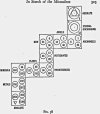Here's one way that 'time' might help.
In dog training/behavioural psychology there is the concept of contiguity. In that field there are definite timings for optimal learning. If behaviour and consequence are paired within 0.5 to 1 second, there is optimal learning. If the time between the behaviour and consequence is stretched to 1 second - 3 seconds, there is still learning but the results are a bit sloppier. If it's stretched out more, from 3 seconds - 10 seconds learning may happen but there are no guarantees and it's a very grey area. After 10 seconds, there is no learning at all.
When I first learned this I found an online timer to practice what if felt like to have the timing correct for optimal learning when I was training a dog. There could be a lot of things going on so I couldn't count off time or watch a clock to be sure I'd gotten it right. I had to be aware of my own internal state so that I wasn't being distracted from the training. I had to be aware of the dogs internal state so that I was acting to support the classical conditioning necessary for the training objective, I had to be aware of the dogs behavioural sequences so that I could deliver either the encouragement or discouragement at the right time and I had to keep the ultimate goal of the training in mind.
So finding a way to practice the timing and get a felt sense of it away from training the dog seemed a good idea. In each 0.5 - 1 second interval I had to make a decision and I had basically 6 choices.
1) Encourage the behaviour
2) Discourage the behaviour
3) Ignore the behaviour
4) Stop and return to an earlier segment of the behavioural sequence to solidify that in the dogs mind.
5) How would I effect the above? What area of training/behavioural psychology would I rely on? Would I change methods based on what I was observing from the dogs response?
6) Take a break from training.
When everything come together, things started happening that I referred to as 'One Second Wonders'. The dog would make a leap in understanding and you can see an 'aha' on their faces or a penny drop kind of expression of relief, or I would get the impulse to do something totally left field, a new combination of old methods or something unusual, and I couldn't tell you where that impulse come from, but I had to act on it inside that one second for the best benefit of the dog.
I kind of liken it to the ouija board process that started out really slow, but as time progressed that planchette moves around that board like it's got skates on and those with their hands on the planchette are perceiving and responding to something within that one second time frame that each letter is delivered in.
Then the murmuration of birds and how the latest session suggests that this is an expression of joy.
Also the C's saying that time is an illusion, but it's necessary for learning in this dimension.
I've noticed that by learning to pay attention in these fraction of a second increments, then I was seeing a lot more - didn't always have answers for exactly what I saw but I was seeing stuff. For example, a friend who had just done a relaxation exercise and was then asked a troubling question - it's almost like I could see or perceive something - nothing that I could accurately define - but it was like a movement of energy from his body to his head. This fellow ordinarily has a kind of expressionless face and is very private about his feelings and emotions. So to perceive that shift in him was new to me.
In any case, here's the kind of timer that I practiced with when I first started out:
 www.humanbenchmark.com
www.humanbenchmark.com
In dog training/behavioural psychology there is the concept of contiguity. In that field there are definite timings for optimal learning. If behaviour and consequence are paired within 0.5 to 1 second, there is optimal learning. If the time between the behaviour and consequence is stretched to 1 second - 3 seconds, there is still learning but the results are a bit sloppier. If it's stretched out more, from 3 seconds - 10 seconds learning may happen but there are no guarantees and it's a very grey area. After 10 seconds, there is no learning at all.
When I first learned this I found an online timer to practice what if felt like to have the timing correct for optimal learning when I was training a dog. There could be a lot of things going on so I couldn't count off time or watch a clock to be sure I'd gotten it right. I had to be aware of my own internal state so that I wasn't being distracted from the training. I had to be aware of the dogs internal state so that I was acting to support the classical conditioning necessary for the training objective, I had to be aware of the dogs behavioural sequences so that I could deliver either the encouragement or discouragement at the right time and I had to keep the ultimate goal of the training in mind.
So finding a way to practice the timing and get a felt sense of it away from training the dog seemed a good idea. In each 0.5 - 1 second interval I had to make a decision and I had basically 6 choices.
1) Encourage the behaviour
2) Discourage the behaviour
3) Ignore the behaviour
4) Stop and return to an earlier segment of the behavioural sequence to solidify that in the dogs mind.
5) How would I effect the above? What area of training/behavioural psychology would I rely on? Would I change methods based on what I was observing from the dogs response?
6) Take a break from training.
When everything come together, things started happening that I referred to as 'One Second Wonders'. The dog would make a leap in understanding and you can see an 'aha' on their faces or a penny drop kind of expression of relief, or I would get the impulse to do something totally left field, a new combination of old methods or something unusual, and I couldn't tell you where that impulse come from, but I had to act on it inside that one second for the best benefit of the dog.
I kind of liken it to the ouija board process that started out really slow, but as time progressed that planchette moves around that board like it's got skates on and those with their hands on the planchette are perceiving and responding to something within that one second time frame that each letter is delivered in.
Then the murmuration of birds and how the latest session suggests that this is an expression of joy.
Also the C's saying that time is an illusion, but it's necessary for learning in this dimension.
I've noticed that by learning to pay attention in these fraction of a second increments, then I was seeing a lot more - didn't always have answers for exactly what I saw but I was seeing stuff. For example, a friend who had just done a relaxation exercise and was then asked a troubling question - it's almost like I could see or perceive something - nothing that I could accurately define - but it was like a movement of energy from his body to his head. This fellow ordinarily has a kind of expressionless face and is very private about his feelings and emotions. So to perceive that shift in him was new to me.
In any case, here's the kind of timer that I practiced with when I first started out:
Human Benchmark
Last edited:





 and trying to make some sense of it..
and trying to make some sense of it..
